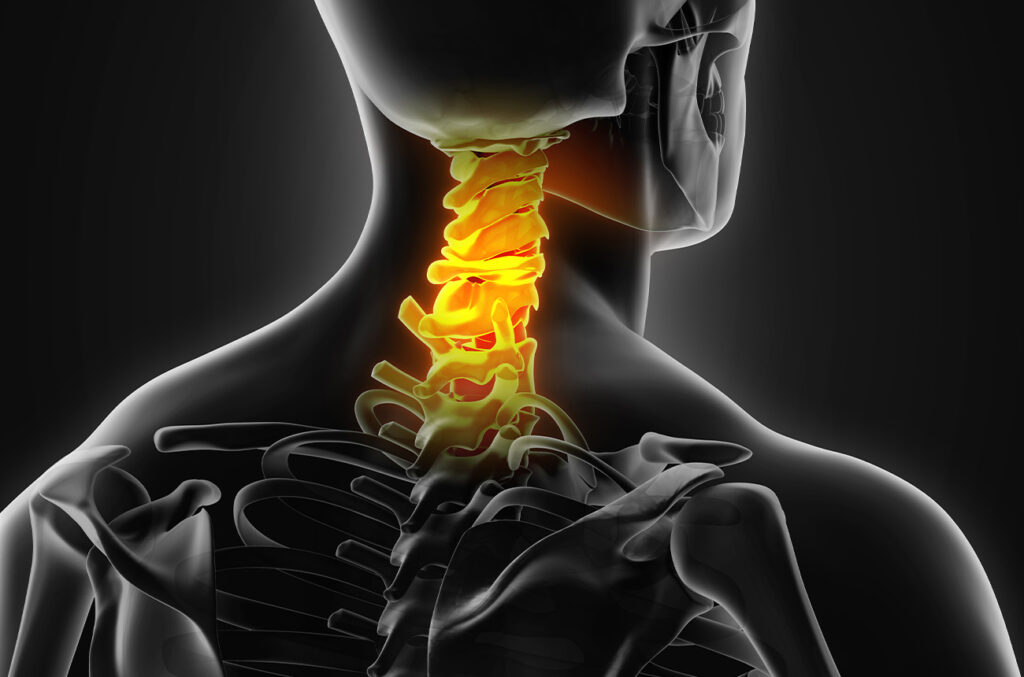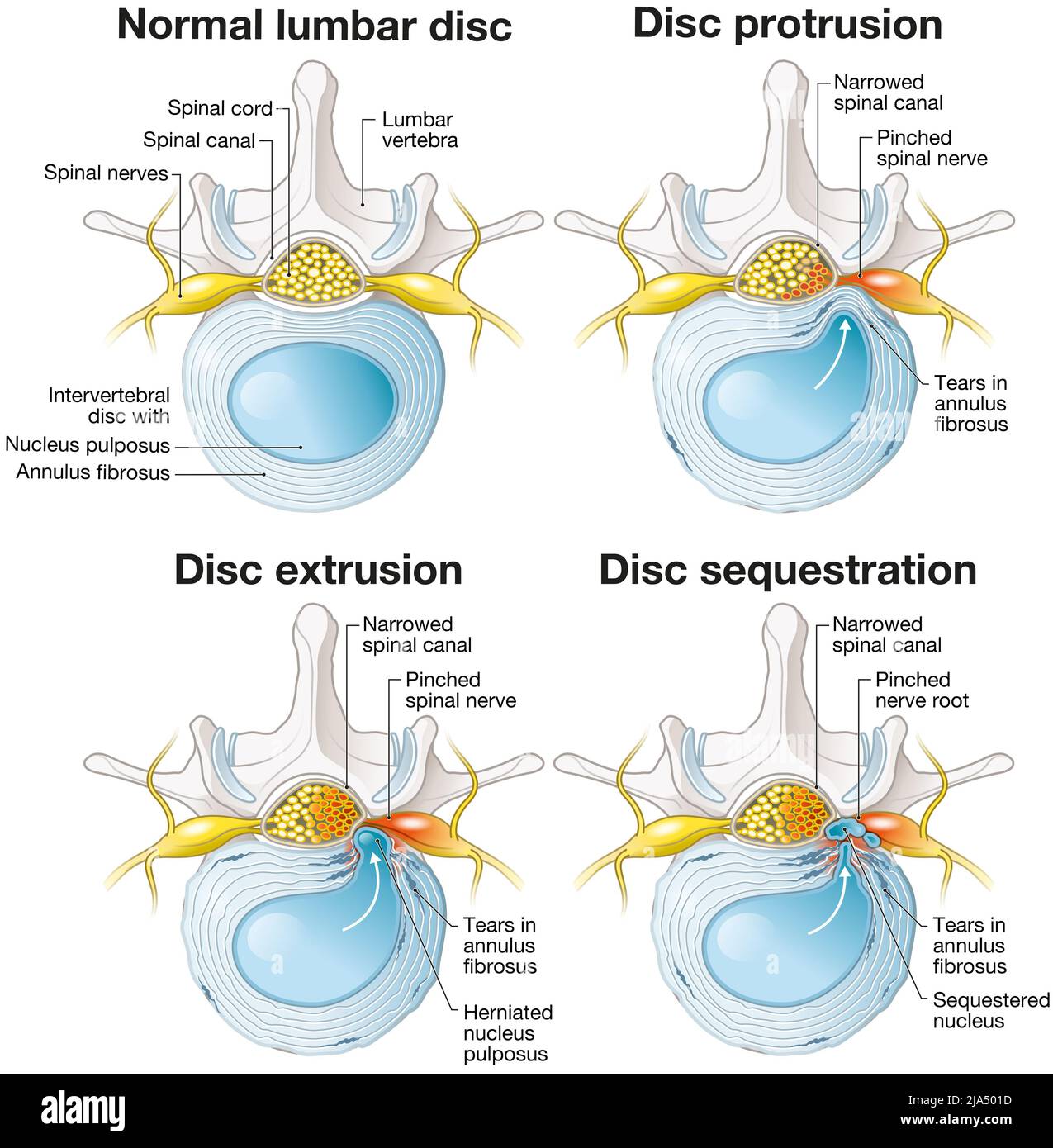Have you ever felt a nagging pain in your lower back, a shooting pain down your leg, or a tingling sensation in your fingertips? These are just some of the symptoms that can be associated with a diffuse disc bulge, a common condition affecting the spine. While it might sound intimidating, a diffuse disc bulge is not necessarily a cause for immediate alarm. Understanding this condition can empower you to make informed decisions about your health and develop a plan to manage any symptoms effectively.

Image:
This comprehensive guide will delve into the fascinating world of diffuse disc bulges, exploring its causes, symptoms, diagnoses, treatment options, and ways to prevent or manage this common spinal issue. We will journey from the basic anatomy of the spine to the intricacies of disc degeneration, ultimately equipping you with the knowledge to navigate this condition confidently.
The Anatomy of a Disc Bulge
Diving Deep into the Spine’s Building Blocks
To understand a diffuse disc bulge, we must first understand the structure of the spine. The spine, or vertebral column, is a complex and intricate structure. Imagine it as a vertical stack of bones, known as vertebrae, that provide support for the body and house the delicate spinal cord. Each vertebra is separated by a soft, rubbery cushion called an intervertebral disc.
The Intervertebral Disc: A Resilient Shock Absorber
Intervertebral discs play a crucial role in maintaining the spine’s flexibility and shock absorption. Each disc has a tough outer ring, called the annulus fibrosus, and a jelly-like center, called the nucleus pulposus. The nucleus pulposus acts as a shock absorber, distributing pressure evenly throughout the disc. This dynamic structure allows the spine to bend, twist, and move with grace and resilience.

Image:
A Glimpse into Disc Degeneration
The Silent Deterioration
Over time, the intervertebral discs can experience wear and tear. This process, known as disc degeneration, can lead to various spinal conditions, including a diffuse disc bulge. The annulus fibrosus, the outer ring of the disc, can weaken and allow the nucleus pulposus to bulge outwards. This bulging, when it extends over a larger area of the disc, is known as a diffuse disc bulge.
Factors Influencing Disc Degeneration
Several factors contribute to disc degeneration, including:
- Age: As we age, the discs naturally lose water content and become less resilient.
- Genetics: Some individuals are genetically predisposed to disc degeneration.
- Lifestyle: Repetitive movements, heavy lifting, and lack of exercise can all accelerate disc degeneration.
- Trauma: Injuries to the back, such as a car accident or a fall, can damage the discs.
- Obesity: Excess weight puts extra stress on the spine and can accelerate disc degeneration.
The Silent Signs: Recognizing a Diffuse Disc Bulge
Understanding the Symptoms
A diffuse disc bulge may not always cause symptoms. However, if the bulge presses on nearby nerve roots, it can cause a range of symptoms, including:
- Back pain: This pain can range from a dull ache to a sharp, shooting pain.
- Neck pain: If the bulge is in the neck, you might experience pain in the neck, shoulders, and arms.
- Leg pain: If the bulge is in the lower back, you might experience pain, numbness, or tingling in your legs, feet, or toes.
- Weakness: A diffuse disc bulge can also cause muscle weakness in the legs or arms.
- Numbness: The bulge can also cause tingling or numbness in the affected area.
Diagnosing the Problem: Unraveling the Mystery
If you are experiencing any of these symptoms, it’s important to see a doctor to get a proper diagnosis. They will likely conduct a physical exam and may order imaging tests, such as:
- X-rays: X-rays can show the structure of the bones and help identify any abnormalities in the spine.
- MRI (Magnetic Resonance Imaging): MRI provides detailed images of the soft tissues, including the discs, nerves, and ligaments, allowing for a more precise diagnosis.
- CT (Computed Tomography) Scan: CT scans provide cross-sectional images of the spine, allowing for a detailed view of the bony structures.
Navigating Treatment Options: Finding Relief
Conservative Approaches: First Steps to Healing
For most people, a diffuse disc bulge can be managed effectively with conservative treatments, such as:
- Rest: Avoid activities that aggravate your pain.
- Ice: Apply ice to the affected area for 15-20 minutes at a time, several times a day.
- Over-the-counter pain relievers: Medications like ibuprofen or acetaminophen can help reduce pain and inflammation.
- Physical therapy: Physical therapists can teach you exercises to strengthen your back muscles and improve your posture.
- Epidural steroid injections: In some cases, your doctor may recommend injections to reduce inflammation around the nerve roots.
Surgical Intervention: When Conservative Options Fall Short
If conservative treatment fails to provide relief, your doctor may recommend surgery. Surgery is typically reserved for cases where the bulge is pressing on a nerve, causing significant pain and weakness. There are several different types of surgery available, and the best option for you will depend on your individual situation.
The Path Forward: Managing and Preventing Diffuse Disc Bulge
Living a Healthy Lifestyle: The Foundation for Spinal Health
A healthy lifestyle can go a long way in preventing or managing a diffuse disc bulge. This includes:
- Maintaining a healthy weight: Excess weight puts extra stress on the spine and can accelerate disc degeneration.
- Regular exercise: Exercises that strengthen your core muscles can help stabilize your spine and reduce the risk of disc injuries.
- Proper posture: Proper posture helps distribute weight evenly across the spine and reduce strain on the discs.
- Ergonomics: Make sure your work environment is ergonomically designed to prevent strain on your back.
- Stress management: Chronic stress can contribute to muscle tension and pain in the back.
Alternative Therapies: Exploring Complementary Approaches
In addition to conventional treatments, alternative therapies like acupuncture, chiropractic care, and massage therapy may help reduce pain and improve function. However, it’s important to discuss any alternative therapies you’re considering with your doctor.
Difuse Disc Bulge
Conclusion: Empowering Yourself with Knowledge
A diffuse disc bulge is a common condition that affects many people. While it can cause discomfort and pain, it can often be managed effectively with conservative treatments. By understanding the causes, symptoms, and treatment options for this condition, you can take proactive steps to protect your spinal health. Remember to consult with your healthcare provider for personalized advice and treatment recommendations.






